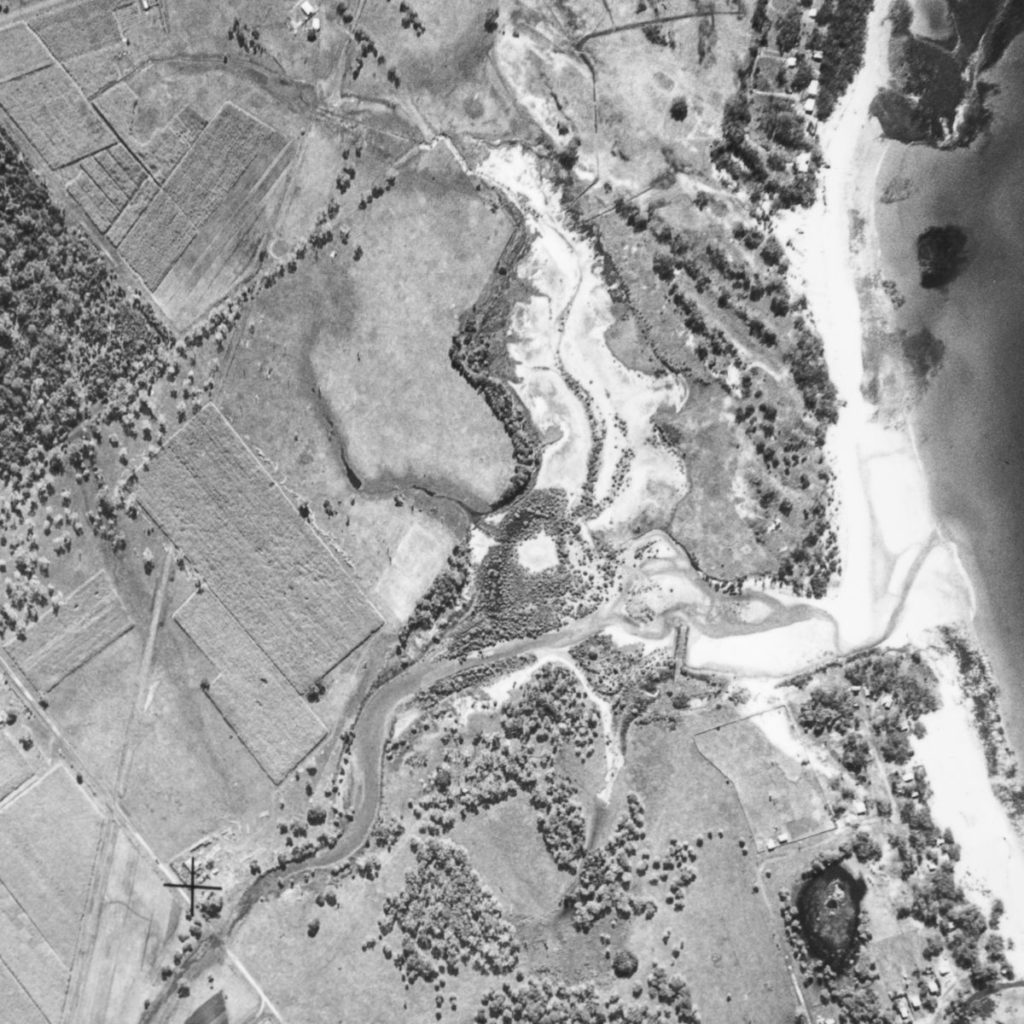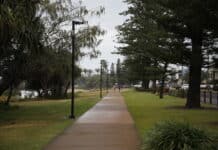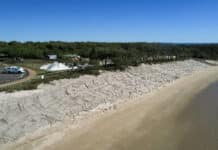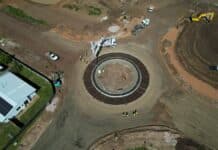Burnett Mary Regional Group (BMRG) is in the process of submitting a grant application through a Department of Natural Resources, Mines and Energy Investment Program for funds to explore historic water quality issues relating to Moneys Creek.
BMRG plans to partner with a water quality management consultancy team to develop a whole-of-catchment management plan, drawing on input from various stakeholders including the Bargara Golf Club, Bundaberg Regional Council and the agricultural sector.
A BMRG spokesman said the funding round was currently open for applications.
The merits of the causeway across Moneys Creek at Bargara and its impact on water quality has been controversial since the project was first mooted more than 50 years ago.
Recent fish kills have had the local community requesting authorities take action to mitigate the problem which worsens when dry weather and high temperatures deplete the lagoon water on the western side of the causeway and oxygen levels fall.
To better understand the process that drove the initial construction of the causeway it is necessary to explore the factors leading to its construction.

Causeway or two span bridge proposed
The Bundaberg News Mail ran an article on January 10, 1966 where a call was made for the construction of either a causeway or a two-span bridge across Kellys (Moneys) Creek (Kellys Creek is a smaller creek to the south of Moneys Creek).
The proposal was borne out of a disparity in property valuations. In 1967 the average value of land to the north of the creek was $1000 while land on the southern side was valued at only $265.
The proposal for a creek crossing was debated by Woongarra Shire Councillors in 1967 and narrowly defeated.
Public support for the initiative, with 76 letters containing 129 signatures, was tabled at a Council meeting on November 24, with a letter from the Bargara Development Association lending weight to the proposal.
Given that construction of the crossing would result in a better rates outcome for Council the matter was again debated and approved by Council with a resounding 8-3 vote in favour.
Reports from the meeting indicated tempers had flared and friendships were threatened by the decision.
Causeway supported due to sandfly problem
Councillors supporting the project cited that the causeway would eliminate mangrove growth in the creek and address the significant sandfly problem in the area. It would also provide Council with a windfall in rates collection.
Woongarra Shire Council approved the $24,255 needed to undertake the project which involved $19,079 for the causeway and $5176 for the approaches.
Council also purchased several blocks of land in Miller Street to facilitate the roadworks.
On December 9, the Moneys Creek causeway was opened to traffic and came in at a mere $15 over budget at $24,270.
The Bargara Golf Club is the principal landholder, being the owner of the lagoon which abuts the golf course and residential development.
The golf club land, lagoon included, was gifted to the community by the Buss family, a prominent Bundaberg business family, in 1925 to form a golf club.
The golf club, Bundaberg Regional Council, BMRG and district agricultural interests are allied in seeking a suitable environmental outcome to the current fish kill issue.

Bargara Golf Club viewpoint
Bargara Golf Club president Janine Smith recently explained the club’s position.
Janine said she believed the lagoon issue is a whole-of-community problem that needs positive community support to help resolve.
“Scientific testing had confirmed that the algae growth within the lagoon was caused through runoff from farming pursuits as well as stormwater discharge from residential development, shopping centres, and the golf course,” she said.
“As a silt trap the causeway has accidentally been very effective in preventing nutrient runoff to the Great Barrier Reef.
“This silting process has been ongoing for 50 years without any mitigation action.
“The bucket is full and now the average depth of the lagoon is less than 20 centimetres.
“Because the catchment is relatively small, flushing by rain events is unlikely to solve the problem.
“It is beneficial that storm water be filtered prior to entering the lagoon, therefore the solution lies in hydrological engineering that provides for seawater to be exchanged regularly to the entire lagoon.”
The naming of Moneys Creek
Moneys Creek was named in honour of the pioneer Money family.
While on a family picnic in 1891, the young women of the party were allowed to enter the water to cool off.
Unfortunately they got into difficulties and John Money was drowned trying to save his daughter Lydia, who also drowned (extract from Heritage of Burnett Shire 1840-2003).







